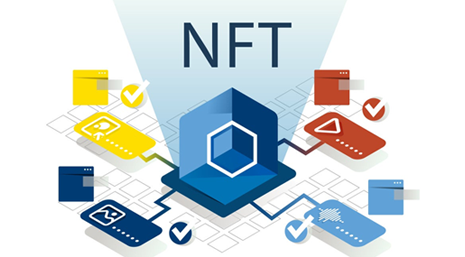share
New technologies bring a lot of opportunities for business.
To leverage them, it’s imperative to not just understand them but weigh the pros and check for possible cons. One such new technology in the world of non-fungible tokens (NFTs) on the blockchain is the NFT whitelist.
In this article, we hope to provide a foundational understanding of the NFT market and staking, but beyond that, we will explain what the NFT whitelist is, how NFT whitelists affect businesses, upcoming projects in the NFT space, and what the transition to NFT 2.0 means.
First, let’s start by.
Understanding the Current NFT Market
The NFT world, like any new market, is ripe for both opportunity and risk. Furthermore, minting them can be done in a matter of minutes. NFT creators from all over the world are constantly creating and selling new collectibles on the internet. Early-adopter investors are rushing to get in on the action.
The reason is simple:
NFTs have already received billions of dollars in investment, and the NFT project business is only getting started. Creators and artists are still learning about digitally native goods, and the NFT world for them is rapidly expanding and becoming more widespread by the minute. We’ve written a separate guide for those who wish to sell their own.
A fork in the road:
Ethereum, a popular blockchain that hosts numerous NFT project marketplaces, poses a challenge that is tied to its rapid expansion and popularity. The Ethereum network may experience slowness and high transaction fees. Because of their already-scaled solutions, competitors such as Polkadot (Flow), Near (Near), and others are all vying to become the de facto NFT blockchain.
NFTs on the FLOW blockchain necessitate the use of Flow wallets, while Ethereum NFTs necessitate the use of Ethereum wallets, and so on.
At the moment, it is unclear whether the NFT projects market is a winner-take-all situation. When making an investment decision, do your own research and keep in mind which blockchain the item was mined on.
Finally, because the NFT world is so new and investors are pouring in, the valuations of some NFTs have skyrocketed. It’s just like any other collectible, with high speculative value when the market is hot. Collectibles are mostly valued based on who owns them and how many there are rather than on their format. A Picasso oil painting on canvas may be worth as much as a Picasso pencil drawing on paper.

What Is an NFT Whitelist?
The Whitelist: NFT project early access list gives privileged access for investors in NFT projects.
A means of securing non-fungible tokens on new NFT projects to a particular account is NFT whitelisting.
There are several benefits to NFT whitelists, including lower gas fees, early access, guaranteed minting, etc., but demonstrating genuine ownership for certain crypto assets in an NFT project is the best reason to get whitelisted.
With the NFT whitelist mechanism, there is no longer a need for gas limit settings, and users are shielded from unknowingly sending tokens to addresses that do not adhere to the ERC721 standard. The NFT whitelist enables NFT projects to limit who is eligible to acquire particular tokens. Those who are on the NFT whitelist also gain early access.
For instance, if the ICO of an NFT project ran out of tokens for their airdrop campaign and individuals continued to attempt to claim their tokens, the project could simply add users’ account addresses to the whitelist and send them the remaining tokens.
NFTs Whitelisting: Why Customers Consider Them an Investment
The most basic way to approach an NFT project (or upcoming project) is to think of it as a digital collection. Most investors (and) businesses) are aware of various types of collections, such as trading cards, artwork, fine wine, and even vintage automobiles.
The approach of businesses when running an NFT whitelist spot is to make it scares. With rarity and hype from early supporters, the value of these NFT projects is.
With the surge in value comes the desire to get whitelisted.
What Are the Benefits of NFT Whitelisting?
Avoid Gas Wars and Pay Less for Fees
 NFT ecosystem and why is it so important to make your own research
NFT ecosystem and why is it so important to make your own research
When you are on the whitelist for an NFT drop, you can select a precise time to mint your tokens. Since those who get whitelisted experience transactions spaced out over multiple time windows, there is less network traffic, which leads to reduced network utilization.
Access Valuable Tokens at a Discounted Rate
Your chance to acquire more valuable tokens in a collection before it is made available to the general public is to participate in a project’s minting phase.
Additionally, projects offer cheaper minting fees to anyone on their whitelist, which is advantageous to both you and the inventor. You pay less, and the public has more confidence in the initiative since they can see how many tokens are being created.
Another advantage for buyers is that they can sell the NFT for enormous gains! As with physical art, the idea of purchasing low and selling high also applies to digital art!
Ensure You Have Access to Mint
NFTs are in high demand, but not everyone can acquire them because they are frequently sold out. Buyers hurry to mint tokens as soon as a project launches because well-designed initiatives draw a lot of interest. Your odds of getting in are, therefore, very low to none.
However, having early access eliminates this issue and ensures that you’ll get your hands on the things you want.
Three Easy Steps to Get Whitelisted
Identify Projects Before They Launch
There are a lot of upcoming NFTs looking to entice people. These new NFTs might be pre-listed before their official public release. In other words, you must get whitelisted before anyone else in order to do so. If you enjoy seeking out new opportunities and trying new things, this should be just what you’re looking for.
Your enthusiasm for new ventures and products, however, means that you take a risk by trusting in a new initiative that has yet to prove itself. NFT scams are common, so it is critical to perform your own research before joining a whitelist. We help set in you in the right direction on that in our NFT companies article.
Join Their Discord Group
Joining a project’s Discord group is a vital step in connecting with the community after you have performed your research and picked a project. On NFT projects, Discord is the most popular communication channel, followed by Twitter.
The whitelisting procedure for most projects is discussed on the Announcements channel of the Discord group, although it may vary depending on the project. If there is no information there, investigate the other channels of the Discord group. It’s possible that you missed the whitelisting phase or that the project doesn’t have one. If you don’t find any information, ask other members of the group in the community chat channel. Most projects have a general chat channel where you can talk about the project or other issues.
Apply
After conducting extensive research on the project and whitelist requirements, you can apply to get whitelisted. You can apply for whitelist approval by filling out a simple Google Form or by earning a spot by actively referring the project. Each project has its own requirements and rules to get whitelisted.
There is no guaranteed method to be whitelisted on an NFT, as requirements will vary. For example, many NFT projects focused on creators might only accept winners of an art competition to get whitelisted. Users who are aware of new developments in Discord groups can benefit by being connected and informed.
Get Whitelisting Services From ICODA
Sign up now, and we’ll be happy to assist you with getting on an NFT whitelist. Whitelists can be either an ICO whitelist or an exchange withdrawal address. In the case of an ICO event, a whitelist is a list of approved and registered participants’ wallets that are provided exclusive access. These lists will be used by cryptocurrency projects to verify you and ensure you adhere to the terms of the token sale.
NFT Fractionalization
Fractional Non-Fungible Tokens (FNFTs) are unique tokens that represent a fraction of an asset. Each token is divisible into smaller parts, representing a percentage of the total asset. For example, if you own 10 FNFTs, that means you own 10% of the asset they represent. FNFTs are useful for virtual items like cosmetic skins, characters, or items.
Let’s say you own 10 FNFTs in a game like CryptoKitties. This means you own 10% of the dragon skin that can be applied to your kitty. The rest of the dragon’s skin is held by other players. Ownership of the skin is represented by the FNFT token. If a player wants to buy that dragon skin, they will pay you a percentage of the skin’s total value. Based on the price of dragon skins in the market, you can determine how much you should receive for the dragon skin.
How to Stake NFTs
NFT staking, also known as farming, simply means storing your NFT assets on a blockchain protocol or Smart Contract to earn interest. In general, staking is one of the many ways to earn passive income in the crypto space that is considered safe, rewarding, and low in terms of investment risk (beware of scammers, though).
Validators must stake their cryptocurrencies to confirm blocks of transactions on blockchains that use the proof-of-stake (PoS) mechanism to process transactions. Furthermore, the duration and yield for staking are typically predetermined before the crypto assets are locked to a network, keeping them out of circulation for a predetermined period of time.
Initially, in the PoS mechanism, a validator is chosen in a deterministic manner based on the number of tokens staked. A greater number of tokens ensures a greater chance of validating transactions and thus earning more rewards. However, because NFTs are non-fungible one-of-a-kind assets, you may be wondering how they can be staked.
Popular NFT Staking Platforms
NFTs cannot be staked on many DeFi platforms supporting other cryptocurrencies. As a result, a small number of projects are working to develop NFT staking protocols. Ideally, a staking pool or an NFT associated with one must be minted or transferred to a protocol that supports it in order to stake cryptocurrency. Before transferring your asset, you must first confirm if your NFT is stakable on such a platform. Here are a few NFT staking platforms.
Splinterlands
Another popular card game based on the blockchain is Splinterlands, in which each card is an NFT. Users can place their cards in a liquidity pool, which other players can use to lend and borrow against. This earns them rewards in the native platform token DEC.
Splinterlands has a highly scalable and quick solution on the Hive blockchain.
Staked cards can be rented, allowing the owner to earn some passive income.
What else can we ask for? Passive income can be earned through NFT staking/lending as well as through the Play to Earn game. A perfect combination of fun and profit.
Onessus
WhenStaking is a staking platform designed specifically for gaming on the Onessus Blockchain. To back up the platform NFTs, you can stake a variety of game NFTs. The platform seamlessly connects to the WAX Cloud Wallet, and the staking platform only supports in-game NFTs from the Onessus blockchain, allowing them to be staked for a yield while also being used for in-game activities. On WhenStaking, holders can earn up to 80% APY, depending on the lock-up period.
If you’d like a more detailed insight into NFTs, consider signing up for one of our consultations.









